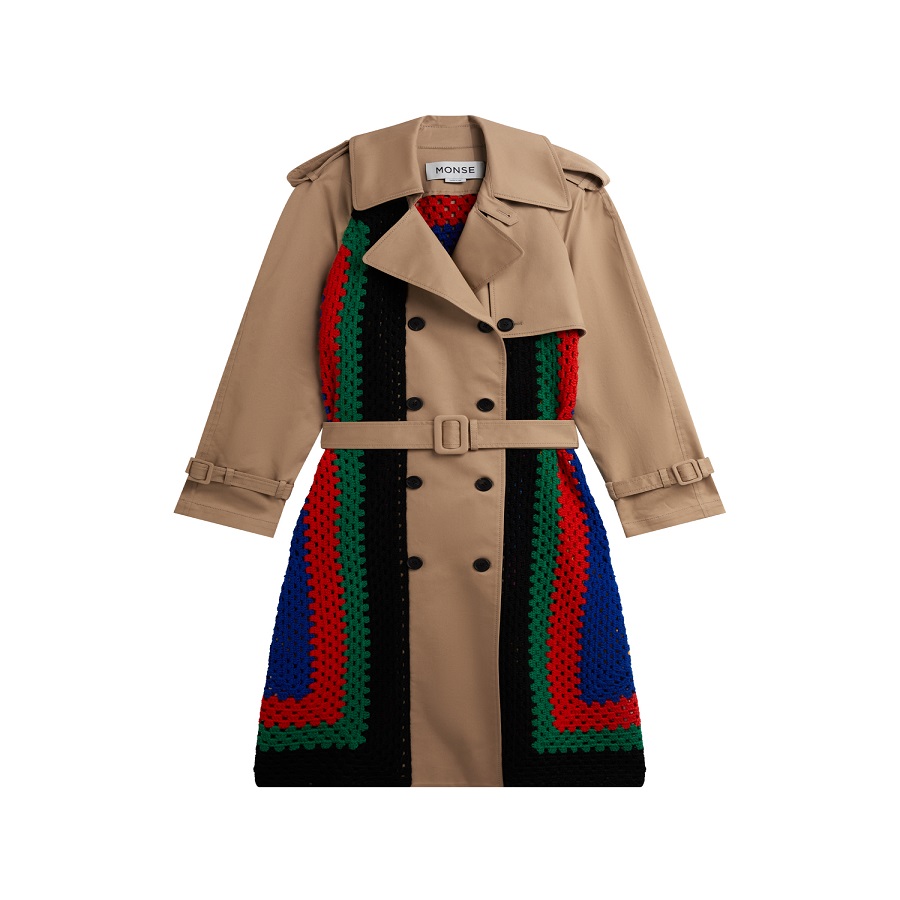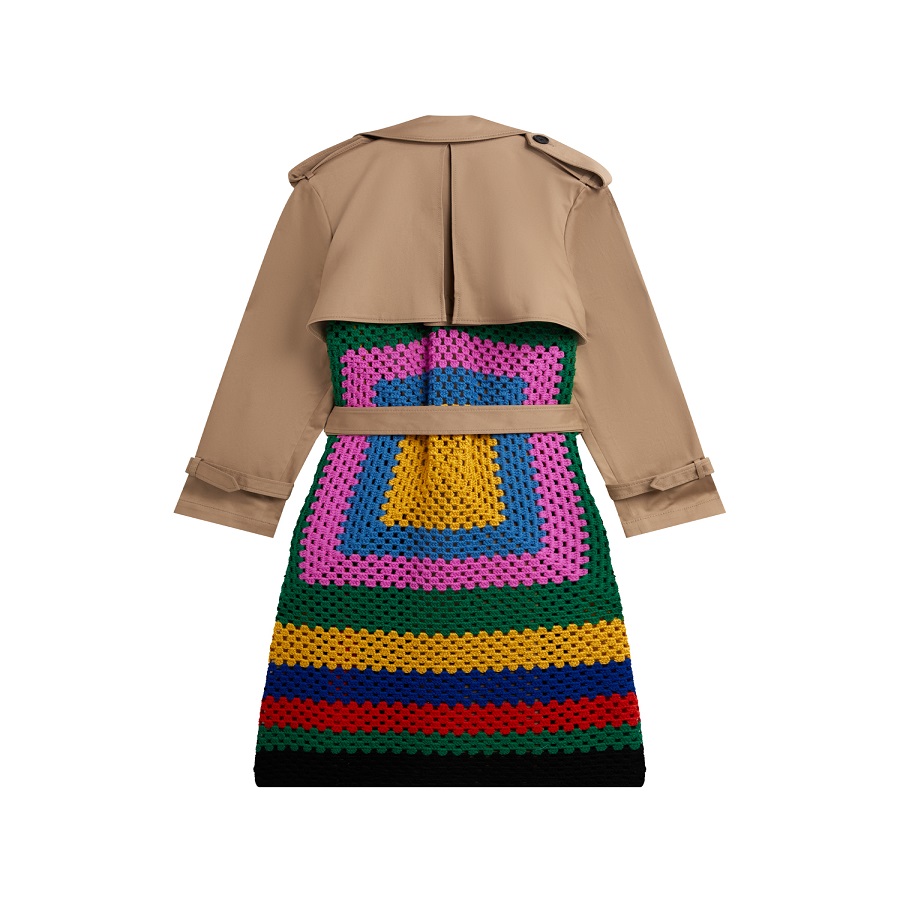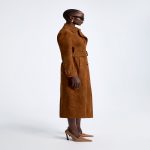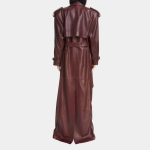Introduction
Crochet isn’t just about blankets and doilies; it has transcended traditional boundaries to become a versatile medium for creating stylish and contemporary fashion pieces. Among the many garments that you can make, a crochet trench coat stands out as a statement piece that can add a unique touch to your wardrobe. This guide will walk you through the process of crafting your own crochet trench coat, combining elegance, comfort, and creativity.
Understanding the Basics of Crochet
Before we dive into the specifics of creating a trench coat, let’s brush up on some crochet fundamentals.
Crochet Materials
- Yarn: Choose a yarn that suits the season you wish to wear your trench coat. Cotton or bamboo blends are great for spring and summer, while wool or acrylic blends work for fall and winter.
- Crochet Hook: The size of your hook will depend on the weight of your yarn. Generally, a 4mm to 6mm hook is ideal for medium-weight yarns.
- Scissors: For cutting yarns.
- Measuring Tape: Accurate measurements are crucial for garments.
- Tapestry Needle: For weaving in ends and seaming pieces together.
Crochet Stitches You Should Know
For a trench coat, you’ll likely use basic stitches, including:
- Chain Stitch (ch): The foundation of most crochet projects.
- Single Crochet (sc): Adds density and a tight feel.
- Double Crochet (dc): Great for creating a more open and lacy texture.
- Slip Stitch (sl st): For joining pieces.
Familiarize yourself with these stitches if you’re a beginner; they will be the building blocks of your trench coat.
Designing Your Crochet Trench Coat
Inspiration and Sketching
Before you start crocheting, spend some time gathering inspiration. Consider styles, colors, and patterns. Sketch a design that includes:
- Length: Decide whether you want a full-length trench or a shorter version.
- Silhouette: Choose a fitted, oversized, or straight cut.
- Details: Think about pockets, buttons, a belt, and any lace or textured patterns.
Measurements
Accurate measurements are key to a well-fitting trench coat. Here are some essential measurements to take:
- Bust: Measure around the fullest part of your bust.
- Waist: Measure around your natural waistline.
- Hip: Measure around the fullest part of your hips.
- Length: Determine how long you want the coat to be from the shoulder down.
- Sleeve Length: Measure from your shoulder to your wrist for full sleeves.
The Crochet Process
Choose Your Pattern
Once you’ve designed your trench coat, selecting or creating a pattern is next. If you’re new to crochet, consider using an existing pattern found in books or online. There are numerous crochet trench coat patterns available that you can modify to fit your design.
Gauge Swatch
Before you start, crochet a gauge swatch using the stitch pattern from your chosen design. This will help you determine if your tension is correct and ensure that your finished trench coat will fit as intended.
To do this:
- Crochet a small square (about 10×10 cm) in the stitch pattern.
- Measure how many stitches fit in a 10 cm square.
- Adjust your hook size or yarn if your gauge does not match the specified gauge in the pattern.
Start Crocheting
With your pattern, yarn, and hook ready:
- Crochet the Body: Start with the back panel. Follow your pattern to crochet the front panels separately. If your design includes intricate stitches or lace, take your time and focus on ensuring the work is neat.
- Crochet the Sleeves: Don’t forget to crochet two sleeves based on your measurements. Decide if you want them long or three-quarter length.
- Constructing the Coat: Once you’ve completed all the pieces, it’s time to assemble your trench coat.
Join Your Pieces
Using a tapestry needle or slip stitch, join your panels together. Here’s a simple method:
- Lay out the back and front panels in the correct orientation.
- Sew or whip stitch the sides together, joining the sleeves to the armholes.
- Add any embellishments, such as pockets and belts.
Finishing Touches
Finishing touches can elevate your trench coat:
- Edging: Consider adding a border using scallops or a shell stitch for a decorative finish.
- Buttons and Closures: Sew on buttons or use ties to close the trench coat. A belt not only adds style but also defines the waist.
- Blocking: To give your trench coat a polished look, soak it in lukewarm water, gently press out excess water, and lay it flat to dry. This process helps to even out stitches and shape the pieces properly.
Style Ideas and Care
Styling Your Crochet Trench Coat
Your crochet trench coat can be styled in numerous ways. Here are a few suggestions:
- Layering: Wear it over a fitted dress or jeans and sweater combos.
- Accessorize: Pair with a statement belt, boots, or a chic hat to enhance your look.
- Seasonal Styling: In cooler months, layer it with scarves or turtlenecks for extra warmth.
Care Instructions
To maintain the quality of your crochet trench coat:
- Wash: Hand wash in cold water with mild soap or use a gentle machine cycle.
- Dry: Always lay flat to dry to avoid stretching.
- Store: Keep it in a cool, dry place, avoiding direct sunlight to prevent fading.

The Allure of the Crochet Trench Coat
A trench coat traditionally embodies classic elegance, a silhouette that combines functionality and sophisticated style. The crochet trench coat elevates this concept by incorporating artistry and individuality, making it an ideal choice for the modern fashionista. The open weave of crochet allows for breathability, making it suitable for transitional seasons while offering an eye-catching texture that captures light and movement. Whether adorned with colorful yarns or crafted in earthy tones, a crochet trench coat has the potential to be a versatile staple in any wardrobe.
Step 1: Inspiration and Design
The journey to creating a crochet trench coat begins with inspiration. Designers often look to various sources—from nature and urban landscapes to historical garments—for ideas. Pinterest boards can be filled with images of intricate crochet patterns, trench coat designs, and color palettes. Sketching is an essential part of this creative process, allowing the designer to visualize the coat’s silhouette, length, and overall aesthetic.
Choosing a Silhouette
Deciding on the trench coat’s silhouette is crucial. Cropped, mid-length, or full-length options can each yield distinct styles. A longer design often evokes elegance, while a cropped version can offer a more casual, modern edge. Additional elements such as oversized collars, pockets, and belts can further shape the coat’s personality. It’s essential to consider what style would resonate with your target audience, whether that’s fashionable millennials, boutique shoppers, or sustainable fashion advocates.
Color and Texture
Color plays a pivotal role in the visual appeal of the coat. While neutrals like beige, cream, and gray offer timeless elegance, bold, contrasting hues can make a striking statement. Yarn texture should also be taken into account—smooth, soft yarns like cotton or merino wool will create a more refined finish, while chunky, textured yarns can add a rustic or bohemian flair.
Material Selection
Choosing the Right Yarn
The choice of yarn will significantly affect the overall feel and drape of the trench coat. Natural fibers, such as cotton, linen, or wool, provide breathability and comfort. Sustainable yarns made from recycled or organic materials are also popular, aligning with the growing movement towards eco-conscious fashion. For added durability, consider blends that combine the best qualities of synthetic and natural fibers.
Tools and Accessories
In addition to selecting the right yarn, crocheters must gather their tools. A range of crochet hooks in varying sizes is essential to accommodate different yarn thicknesses. Other tools like stitch markers, measuring tapes, and tapestry needles will assist in creating a polished finish.
Pattern Creation
Developing the Crochet Pattern
With the design finalized and materials in hand, it’s time to develop the crochet pattern. Many designers prefer to create their own patterns to ensure originality. Beginners might choose to adapt existing patterns available in stitch guides or online communities. Key stitches for a crochet trench coat can include double crochet, half double crochet, and chain stitches, all of which contribute to the overall texture and structure.
Incorporating Structural Elements
To achieve the trench coat’s iconic features, structural elements such as buttonholes, edgings, and closures need careful consideration. Planning these features in advance will save time and ensure a well-fitted garment. For an authentic trench coat look, consider incorporating a belt and perhaps even epaulets on the shoulders, which evoke traditional military style.
The Crafting Process
Starting with a Foundation
Once the pattern is established, it’s time to begin crafting. Start with a foundation chain that matches the width of your desired trench coat. Crocheting in rows or in the round, depending on your design, will gradually create the body of the coat.
Assembling the Pieces
Crocheting individual pieces is an essential step before assembly. Most trench coat designs consist of separate crochet panels for the front, back, sleeves, and collar. Each piece must be blocked after completion to ensure the edges lay flat and the stitches are even. This process ensures a polished final product, crucial for a garment that aims to impress.
Final Assembly
Once all panels are crocheted, it’s time to sew them together. Using a yarn needle, carefully join the pieces using the whip stitch or slip stitch method to create seamless connections. Attention to detail here is vital—uneven seams or loose joins can detract from the overall professionalism of the coat.
Finishing Touches
Adding Details
With the coat assembled, now comes the fun part—adding details. This could include fringe, pom-poms, or even beads to accentuate the design. Custom buttons or unique closures can offer a personal touch and elevate the coat’s aesthetic.
Blocking and Steaming
After assembling, block the coat once more to ensure it retains its shape. Lightly steaming can help relax fibers and reduce any curling at the edges. This process not only refines the final product but also enhances the visual appeal, creating clean lines and a nicely finished silhouette.

Conclusion
Creating your own crochet trench coat is not only a rewarding project that showcases your craftsmanship, but it also allows you to express personal style. By following the steps outlined here and experimenting with your designs, you can craft a piece that is both stylish and functional. Whether you’re wearing it over a cozy outfit on a chilly day or dressing it up for a night out, your bespoke crochet trench coat is sure to turn heads. Enjoy the process, and happy crocheting!

